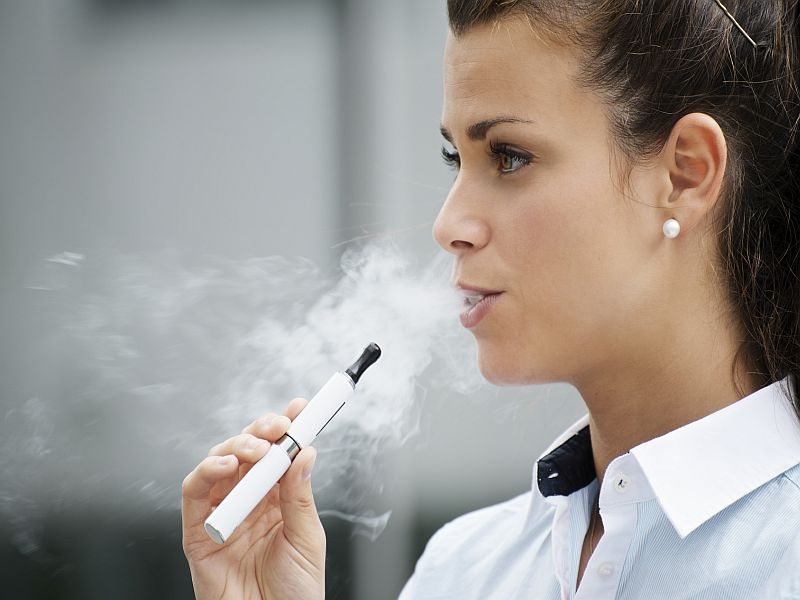WEDNESDAY, April 24, 2019 (HealthDay News) — You might need to worry about inhaling more than just nicotine when you vape: New research warns that many electronic cigarettes appear to be contaminated with fungi and bacteria.
The finding stems from a close look at the contents of 75 popular vaping products.
About half of the e-cigarettes examined were of the single-use cartridge variety, while the other half were refillable products. Both contained liquid laced with nicotine, along with other chemicals. Once a user takes a puff, a battery-powered heating device vaporizes the liquid, turning it into inhalable vapor.
But nicotine was not all that was found in the vapor of many products. Study author Dr. David Christiani said 23% of the electronic cigarette products they examined contained bacterial toxins, while 81% tested positive for a substance called glucan, which is found on the cellular structures of most fungi.
“The contamination took place in electronic cigarette liquid and in the cartridges,” Christiani said, although the cartridge e-cigarettes contained more than three times more glucan than the refillable liquid e-cigarettes.
Christiani, director of the environmental and occupational medicine and epidemiology program at Harvard’s T.H. Chan School of Public Health, characterized the findings as “surprising.” But when asked if the identified contaminants actually pose a danger to vapers, he suggested the jury is still out on that question.
Potentially, “they are toxic,” Christiani said. That means that, over time, exposure to high amounts of such contaminants can prompt the onset of progressive lung illnesses such as emphysema, chronic bronchitis and asthma.
But as a practical matter, Christiani noted that the contaminant levels his team found in e-cigarettes was actually “considerably lower” than levels “that have been shown to cause lung disease” in workplace environments where manufacturing chemicals abound.
What’s more, such contaminants are also found in standard cigarettes, where levels “are [also] generally higher than what we measured here,” he added.
The bottom line: “At this time, we do not have scientific evidence that the levels we see in these electronic cigarette products raise health concerns,” Christiani concluded.
Still, he cautioned that “we do not know what the risk is with long-term usage, with increasing cumulative dose, and with the interaction between these contaminants and other potentially toxic agents we and others have found in electronic cigarette products, such as flavorants or industrial solvents.”
Christiani’s team noted that the popularity of e-cigarettes has exploded in just a few years, particularly among young users. For example, the authors pointed out that while just 220,000 high school students vaped in 2011, last year that figure hit more than 3 million.
And though many experts take the position that vaping is probably a safer option than smoking standard cigarettes, as its use has grown, so has public health scrutiny.
As to what might cause contamination, the study team said it could happen at any point during the production process. But they also pointed a finger at the cotton fiber wicks found in e-cigarette cartridges, given that such fibers are known to host both bacteria and fungi.
Regardless of whether such contaminants ultimately pose a significant risk, “vaping is potentially harmful to your health, and [it’s best] not to do it,” Christiani said. “More study is needed to determine whether vaping can be made safer by removal of all contaminants and adulterants.”
The study was published online April 24 in the journal Environmental Health Perspectives.
Victoria Stevens is scientific director of epidemiology research with the American Cancer Society. She agreed that “a more complete understanding of what’s in e-cig products, and what their users are exposed to, would help define some of the potential risk of vaping.”
Stevens pointed out, for example, that the bacterial and fungal property that the study team found in e-cigarettes “are common contaminants, and are found in things like household dust.”
So she suggested that until more research clarifies exactly how much exposure vapers face — in terms of both what is found in vaping devices and what users actually inhale — “it is unclear whether this contamination is a cause for concern.”
More information
To learn more about vaping, visit the U.S. Centers for Disease Control and Prevention.
Copyright © 2025 HealthDay. All rights reserved.

